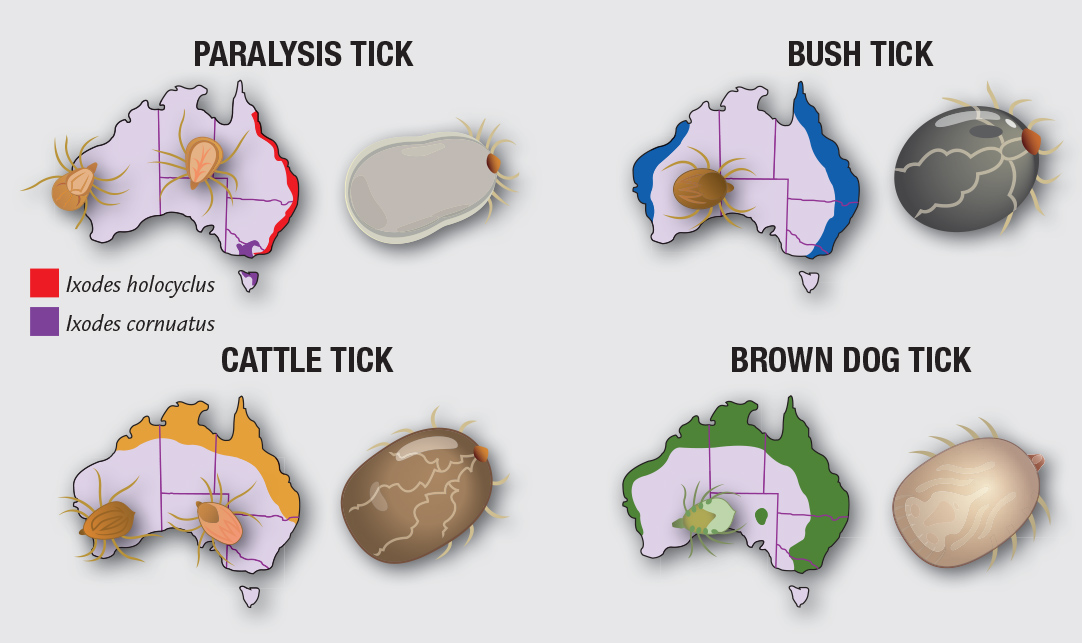The tick population is on the rise, along with increased temperatures and humidity. Loving bushy, humid environments and travelling through the suburbs on host animals such as bandicoots, they are now active in places where they were not so common in the past, Everyone should be on the alert. Paralysis ticks normally emerge during the spring and summer months, but the breeding season for ticks is well underway in winter, due to warm winter days. A tick bite can kill and cat or dog, and cause paralysis in humans. Proteins in the saliva can also trigger anaphylaxis, with tick bites causing more life threatening allergic reactions than bee or wasp stings.
The best prevention is to search your pet by running your fingers through their coats every day – in particular if you live in a tick prone area. Symptoms to watch out for include vomiting, wobbliness in the back legs, loss of appetite, difficulty in breathing and a change in the animals bark or meow. Tick paralysis can be fatal – in fact the mortality rate is about 5%. Early detection is the key – that enables treatment. So if you suspect there’s tick, even if you can’t find it, get your pet to the vet without delay.
When someone is bitten, experts recommend killing the tick with insect repellent or an ether based spray, and waiting for it to fall off. If you disturb a tick it can cause them to squirt more saliva and the saliva contains all the toxins. Ticks on pets should be removed immediately and kept for identification and the animal should be brought to a vet for treatment as soon as possible. Even with up to date tick prevention your pet can fall ill. It’s worth considering clipping coats short and checking every day, in particular around the face, ears and paws.







Leave A Comment